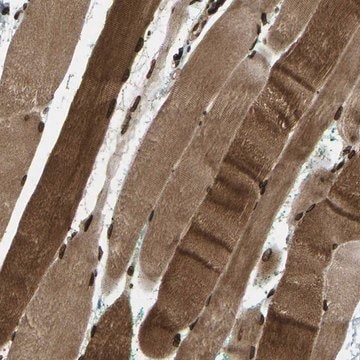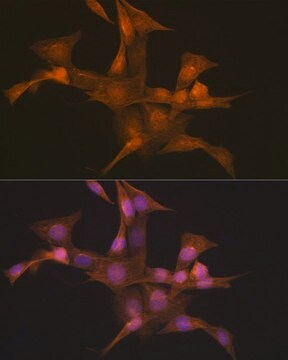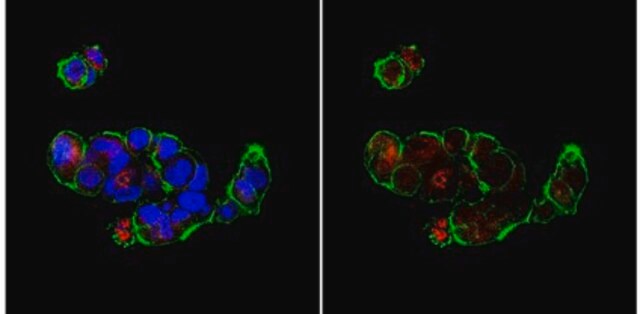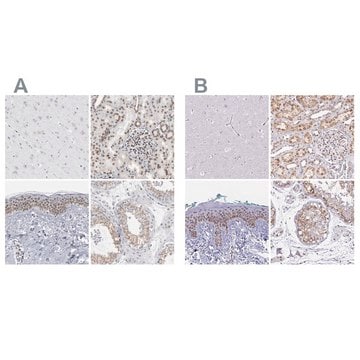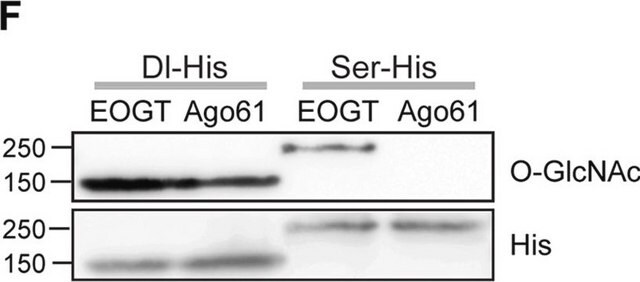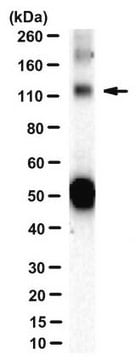MABT843
Anti-SYNE1 Antibody, clone 7A12 (MANNES1A)
clone 7A12, from mouse
Sinónimos:
Nesprin-1, Enaptin, Myne-1, Myocyte nuclear envelope protein 1, Nuclear envelope spectrin repeat protein 1, Synaptic nuclear envelope protein 1, Syne-1
About This Item
Productos recomendados
biological source
mouse
Quality Level
antibody form
purified immunoglobulin
antibody product type
primary antibodies
clone
7A12, monoclonal
species reactivity
rat, human, mouse, rabbit
technique(s)
immunocytochemistry: suitable
western blot: suitable
isotype
IgG1κ
NCBI accession no.
UniProt accession no.
shipped in
ambient
target post-translational modification
unmodified
Gene Information
human ... SYNE1(23345)
General description
Specificity
Immunogen
Application
Cell Structure
Immunocytochemistry Analysis: A representative lot immunostained the nucleus of acetone/methanol-fixed rat aortic vascular smooth muscle cells (VSMCs) by fluorescent immunocytochemistry (Duong, N.T., et al. (2014). PLoS One. 9(4):e94380).
Immunocytochemistry Analysis: A representative lot detected SYNE1 immunoreactivity predominantly in the nucleus by fluorescent immunocytochemistry staining of acetone/methanol-fixed human skin fibroblasts regardless of their emerin expression. SYNE1 immunoreactivity was redistributed to ER in the absence of lamin A/C in Lamn-/- mouse embryonic fibroblasts (MEFs) (Randles, K.N., et al. (2010). Dev. Dyn. 239(3):998-1009).
Immunocytochemistry Analysis: A representative lot immunostained multinucleate myotube nuclear envelopes, while only very weak or little SYNE1 immunoreactivity was seen among mononucleated myoblasts in myoblast cultures undergoing differentiation (Randles, K.N., et al. (2010). Dev. Dyn. 239(3):998-1009).
Western Blotting Analysis: A representative lot detected multiple SYNE1 spliced isoforms (including Giant/Enaptin, Beta, and Alpha) in human muscle tissue, skeletal muscle cells and dermal fibroblasts, as well as in Lmna-/- mouse embryonic fibroblasts (MEFs) (Randles, K.N., et al. (2010). Dev. Dyn. 239(3):998-1009).
Quality
Isotyping Analysis: The identity of this monoclonal antibody is confirmed by isotyping test to be mouse IgG1 .
Target description
Physical form
Storage and Stability
Other Notes
Disclaimer
Not finding the right product?
Try our Herramienta de selección de productos.
Storage Class
12 - Non Combustible Liquids
wgk_germany
WGK 1
flash_point_f
Not applicable
flash_point_c
Not applicable
Certificados de análisis (COA)
Busque Certificados de análisis (COA) introduciendo el número de lote del producto. Los números de lote se encuentran en la etiqueta del producto después de las palabras «Lot» o «Batch»
¿Ya tiene este producto?
Encuentre la documentación para los productos que ha comprado recientemente en la Biblioteca de documentos.
Nuestro equipo de científicos tiene experiencia en todas las áreas de investigación: Ciencias de la vida, Ciencia de los materiales, Síntesis química, Cromatografía, Analítica y muchas otras.
Póngase en contacto con el Servicio técnico